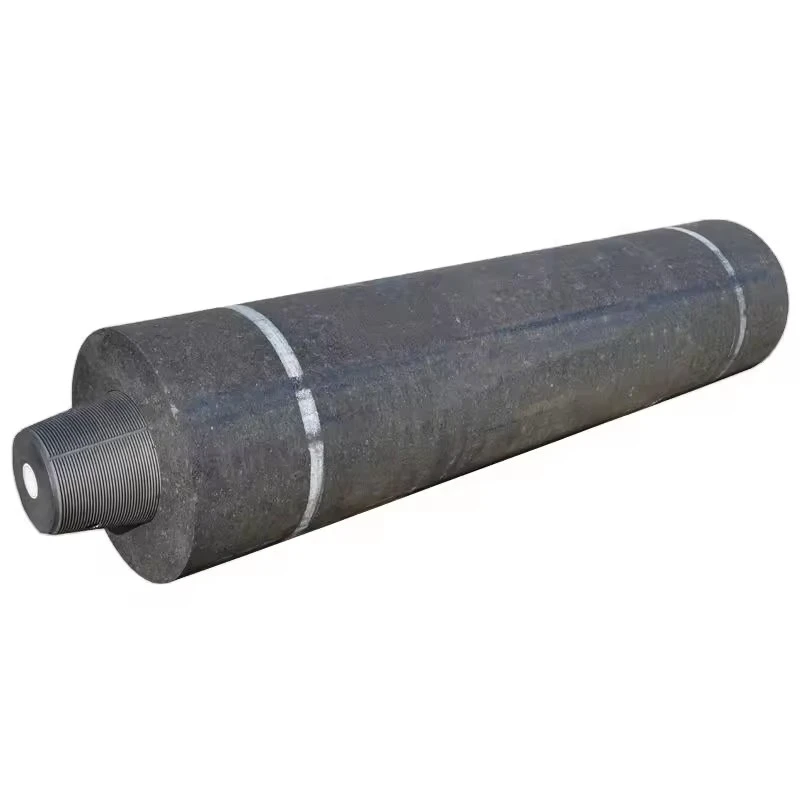An electrode is essentially a conductor of electricity that is used to make contact with a nonmetallic part of a circuit, such as an electrolyte. Think of it as a gateway where electrical current transitions into ionic current, or vice versa, enabling electrochemical reactions to occur. These reactions are at the heart of processes like electrolysis, where electrical energy is used to drive non-spontaneous chemical changes.
The electrode material is paramount because it directly influences the efficiency, stability, and overall success of the electrode process. The conductivity of the electrode, its resistance to corrosion, and its catalytic activity (its ability to facilitate chemical reactions) are all dictated by the composition of the electrode. Different applications demand different properties, making the choice of electrode material a critical decision in engineering and materials science. For instance, an electrode used in a battery needs to withstand numerous charge-discharge cycles, while an electrode in a chemical production plant must resist harsh chemical environments.
What are the Key Properties We Look for in an Ideal Electrode Material?
An ideal electrode possesses a suite of desirable characteristics. Foremost is good electrical conductivity, allowing for the efficient flow of electrons with minimal energy loss. This high conductivity minimizes the voltage required to drive the electrochemical reaction. Another crucial property is chemical inertness or stability and good corrosion resistance. The electrode shouldn’t readily react with the electrolyte or the products of the electrolysis, ensuring a long lifespan and preventing contamination.
Furthermore, depending on the application, catalytic activity can be highly desirable. For reactions like the electrolysis of water, where the reaction rate might be slow, using electrode materials that catalyze the formation of hydrogen gas and oxygen can significantly improve efficiency. Other considerations include cost, availability, mechanical strength, and surface area. A larger electrode surface can accommodate more reactions, leading to higher current densities. Therefore, the choice of electrode material is a delicate balance of these factors, tailored to the specific application.
Diving Deeper: What’s the Difference Between the Anode and Cathode in Electrochemical Processes?
In any electrochemical cell, including those used for electrolysis, there are two key electrodes: the anode and the cathode. The anode is defined as the positive electrode where oxidation occurs. During electrolysis, electrons are pulled away from the reacting species at the anode and flow into the external circuit. Conversely, the cathode is the negative electrode where reduction takes place. Electrons from the external circuit are supplied to the cathode, where they are used to reduce other species.
Therefore, the flow of electrons is always from the anode to the cathode in the external circuit. Understanding the roles of the anode and cathode is crucial for comprehending how electrolysis works. For example, in the electrolysis of water, at the anode, water molecules are oxidized to produce oxygen gas and electrons, while at the cathode, water molecules (or more precisely, hydrogen ions in acidic solutions) are reduced to form hydrogen. The anode material and cathode material are often different, chosen based on their suitability for the specific reactions occurring at each electrode.

What Happens at the Electrode Surface During Electrolysis?
The electrode surface is where all the action happens during electrolysis. At the anode, the positive materials proceeds through oxidation, meaning atoms or ions lose electrons. These liberated electrons then travel through the conductive material of the electrode and into the external circuit. Conversely, at the cathode, reduction occurs, where atoms or ions gain electrons that are supplied from the external circuit via the electrode.
These electrode reactions are fundamental to electrolysis. The electrode potential, which is the measure of the tendency of a chemical species to acquire or lose electrons, dictates which reactions are thermodynamically favorable at each electrode. The nature of the electrode surface, including its roughness and the presence of any catalytic sites, can significantly impact the kinetics (rate) of these reactions. Therefore, scientists and engineers often focus on modifying the electrode surface to enhance the efficiency and selectivity of electrolysis processes.
When Considering Metal Electrodes, Why is Copper a Commonly Used Electrode Material?
Copper stands out as a metal frequently used as electrode material due to a compelling combination of properties. First and foremost, copper boasts excellent conductivity, second only to silver among common metals. This high conductivity ensures minimal energy loss during electrolysis and other electrochemical processes. Copper is also relatively inexpensive and readily available, making it an economically viable choice of electrode material for many applications.
Furthermore, copper exhibits good machinability, allowing it to be easily shaped into various electrode designs, such as plates, rods, and wires. While copper can undergo oxidation over time, forming copper oxide, its corrosion rate is manageable in many environments, especially when used as the cathode. Therefore, copper electrodes are typically used in applications like electroplating, where a thin layer of copper is deposited onto another metal, and in certain types of batteries.
Beyond Copper: What Other Metals and Materials are Frequently Used as Electrode Materials?
While copper is a common choice, a wide number of materials are employed as electrode materials, each with its own set of advantages and disadvantages. Platinum electrodes are highly prized for their exceptional chemical inertness and catalytic activity, making them ideal for research and demanding applications, although their high cost limits their widespread use. Graphite is another popular carbon material, especially in industrial electrolysis processes, due to its good conductivity, low cost, and resistance to corrosion in certain environments. Graphite electrodes are commonly used as the anode in the electrolysis of brine to produce chlorine.
Nickel is frequently used in alkaline electrolysis of water due to its good performance and lower cost compared to platinum. Stainless steel offers a balance of conductivity, corrosion resistance, and cost, making it suitable for various electrode applications. Titanium, often coated with metal oxides like ruthenium oxide or iridium oxide, is extensively used as the anode in industrial electrolysis due to its excellent corrosion resistance, particularly in chloride-containing solutions. The field of electrode materials is constantly evolving, with researchers exploring new materials and composite materials to enhance performance of electrodes.
Specifically for the Electrolysis of Water, What Types of Electrodes are Typically Used?
The electrolysis of water, the process of splitting water into hydrogen and oxygen using electricity, is a key technology for clean energy production. The electrodes in electrolysis of water play a crucial role in the efficiency of this process. Historically, platinum electrodes were considered the gold standard due to their high catalytic activity for both the hydrogen evolution reaction (at the cathode) and the oxygen evolution reaction (at the anode). However, the high cost of platinum has spurred the search for more affordable alternative electrode materials.
Currently, nickel and its alloys are widely used as cathode materials in alkaline water electrolysis due to their good activity and stability in alkaline conditions. For the anode, nickel is less effective in the long term due to oxidation. Therefore, metal oxides, particularly those based on ruthenium and iridium, are often used as active materials for the positive electrode, coated onto a conductive substrate like titanium. Researchers are also exploring carbon-based materials, such as modified graphite, and new electrode materials to further improve the efficiency and reduce the cost of water electrolysis.
How Does the Choice of Electrode Material Impact the Performance of Electrodes in Electrolysis?
The performance of electrodes in electrolysis is heavily influenced by the electrode material. The conductivity of the electrode directly affects the energy efficiency of the process. Electrodes with high conductivity minimize resistive losses, requiring less energy to drive the electrolysis. The catalytic activity of the electrode material dictates the overpotential, which is the extra voltage required to make the electrode process occur at a reasonable rate. Materials with high catalytic activity reduce the overpotential, leading to higher energy efficiency.
The corrosion resistance of the electrode determines its longevity and the purity of the products. Electrodes that readily corrode will need frequent replacement and can contaminate the electrolyte and the generated gases. The surface area of the electrode also plays a significant role. A larger surface area provides more sites for the electrode reactions to occur, allowing for higher current densities and faster production rates. Therefore, the careful characterization of electrode materials is crucial for optimizing the performance of the electrode in any given electrolysis application.
Are There Any Emerging or New Electrode Materials on the Horizon?
The quest for better electrode materials is a vibrant area of research in materials science and electrochemistry. Researchers are actively exploring new materials to overcome the limitations of existing electrodes, particularly for applications like batteries and fuel cells, but also for advanced electrolysis systems. New electrode materials for lithium–ion batteries, for example, are focused on increasing energy density and cycle life.
In the context of water electrolysis, significant effort is being directed towards developing non-noble metal catalysts to replace expensive platinum and iridium. This includes exploring metal oxides, sulfides, phosphides, and selenides of transition metals. Carbon materials, including graphene and carbon nanotubes, are also being investigated for their potential as electrode supports and even as active catalytic materials after modification. Composite materials, combining the advantages of different materials, are another promising avenue for new electrode development. These advancements promise to revolutionize the efficiency and cost-effectiveness of electrochemical technologies.
Ultimately, How Does Understanding Electrode Material Benefit Various Applications?
A thorough understanding of electrode material science is fundamental to advancing a wide range of technologies. In electrolysis, this knowledge allows for the design of more efficient and durable systems for producing hydrogen, chlorine, and other valuable chemicals. In battery technology, the development of novel electrode materials is key to creating batteries with higher energy density, faster charging times, and longer lifespans, powering everything from portable electronics to electric vehicles.
In fuel cells, understanding electrode materials enables the design of catalysts that efficiently convert chemical energy into electrical energy. Even in seemingly simple applications like sensors, the choice of electrode material dictates sensitivity and reliability. By understanding the fundamental properties of different materials and how they interact in electrochemical environments, scientists and engineers can tailor electrode compositions to optimize performance of electrodes in countless applications, driving innovation across diverse industries. From the fundamental principles of electrochemistry to the practicalities of industrial processes, the study of electrode materials is essential for shaping a more sustainable and technologically advanced future.
Key Takeaways:
- Electrodes facilitate the transfer of electrons in electrochemical processes like electrolysis.
- The choice of electrode material is critical for conductivity, corrosion resistance, and catalytic activity.
- The anode is where oxidation occurs, and the cathode is where reduction occurs.
- Common electrode materials include copper, platinum, graphite, and nickel, each with specific advantages.
- For water electrolysis, nickel-based materials are often used as cathodes, and metal oxides as anodes.
- Ongoing research focuses on developing new, cost-effective, and highly efficient electrode materials.
- Understanding electrode materials benefits various applications, including energy storage, chemical production, and sensing technologies.
Post time: 01-13-2025



